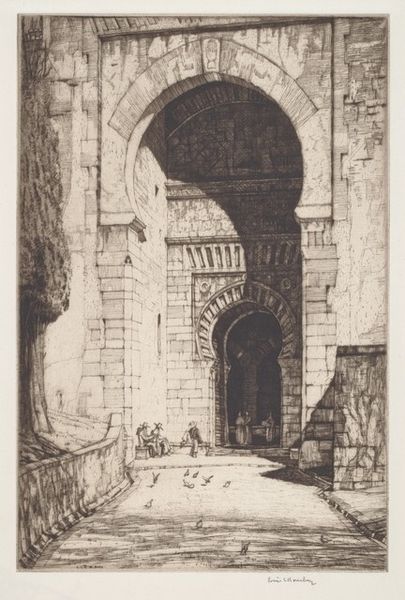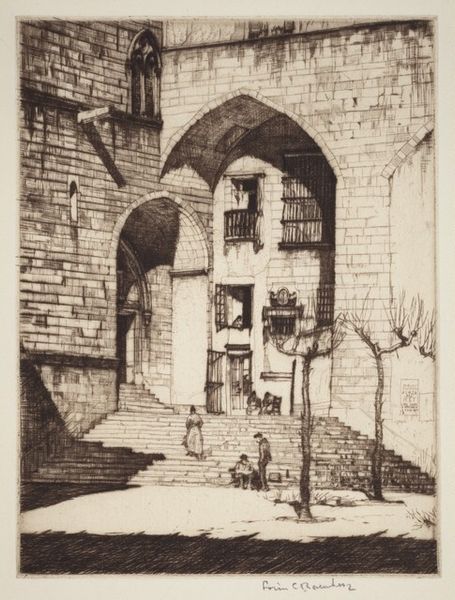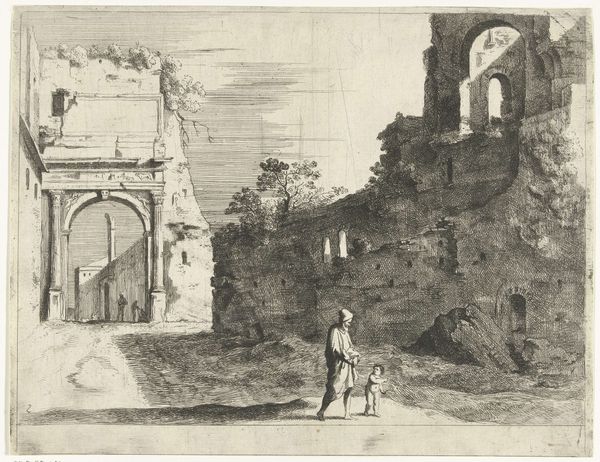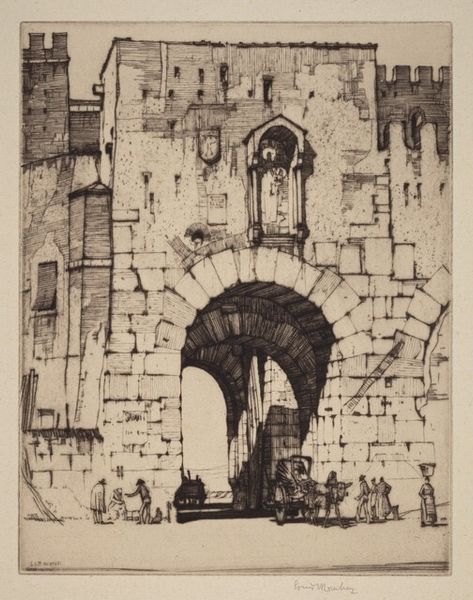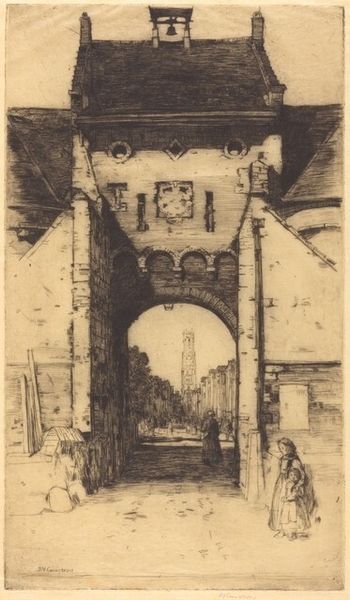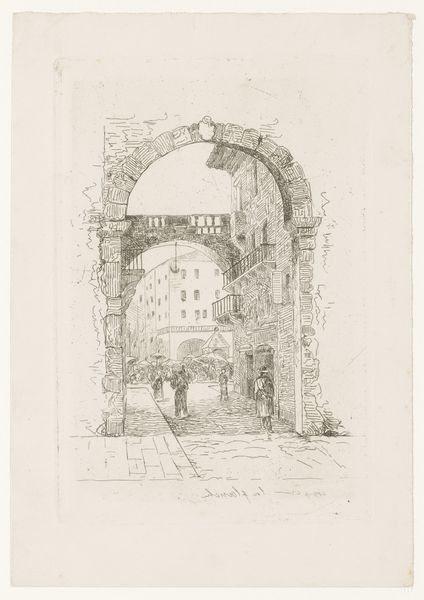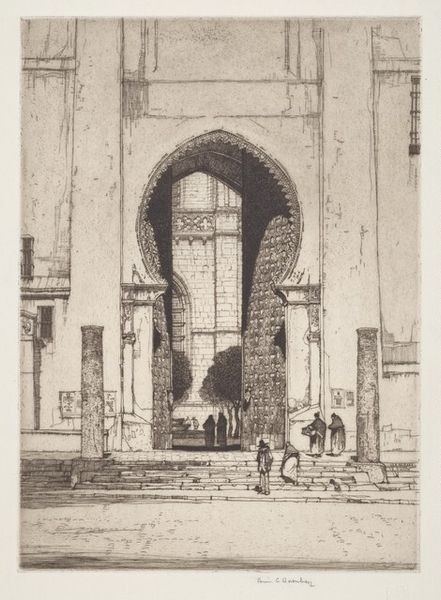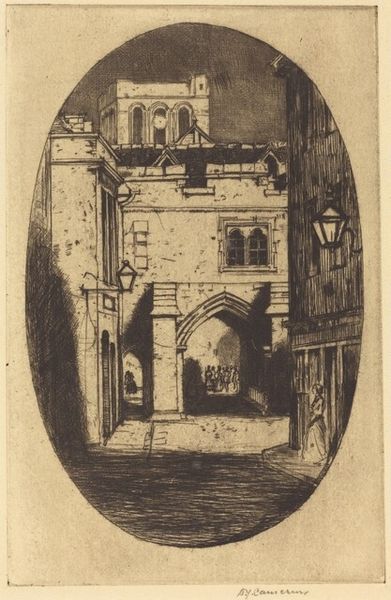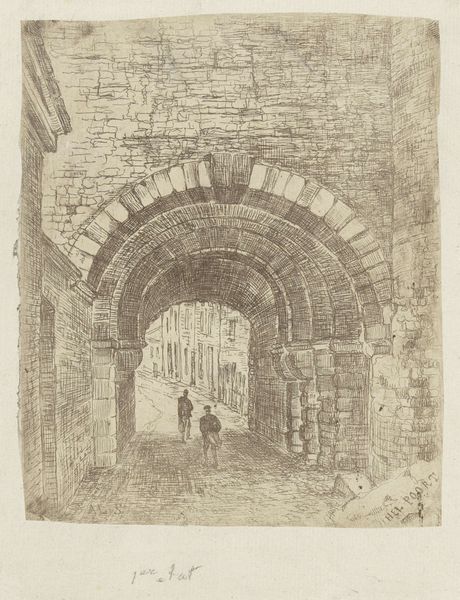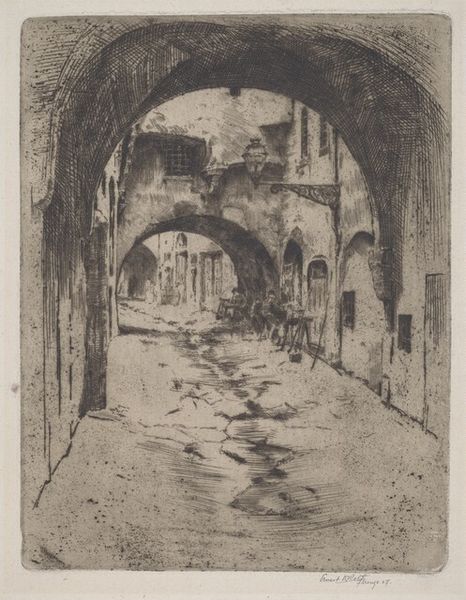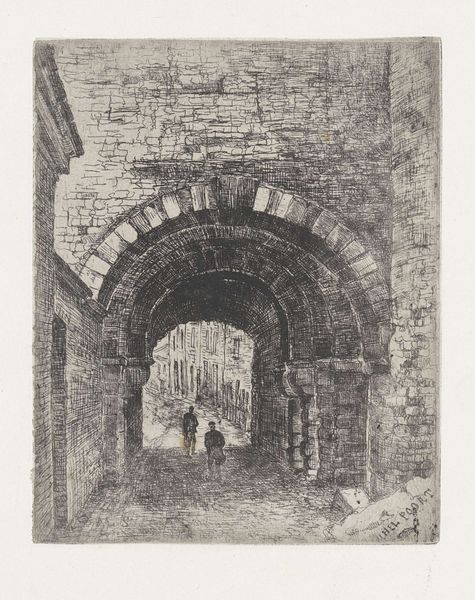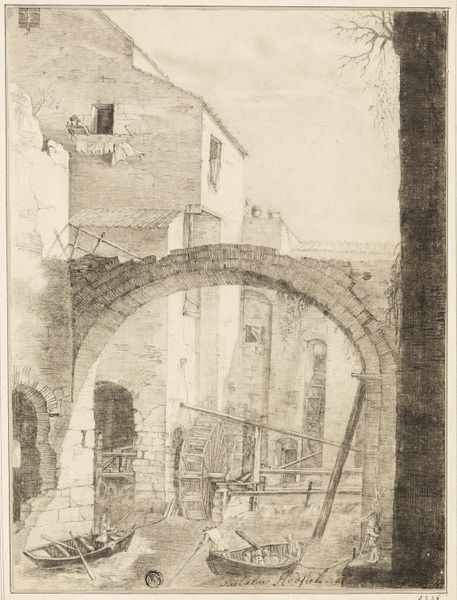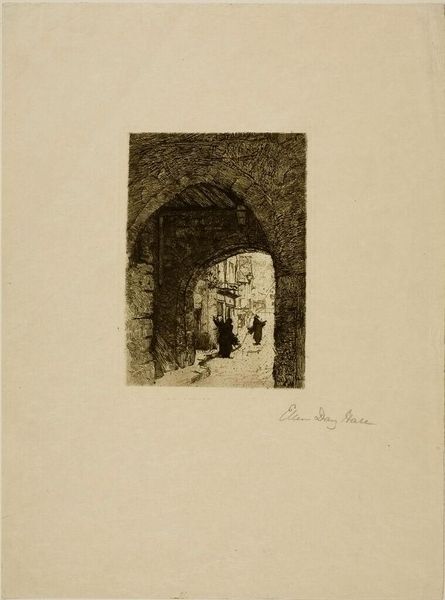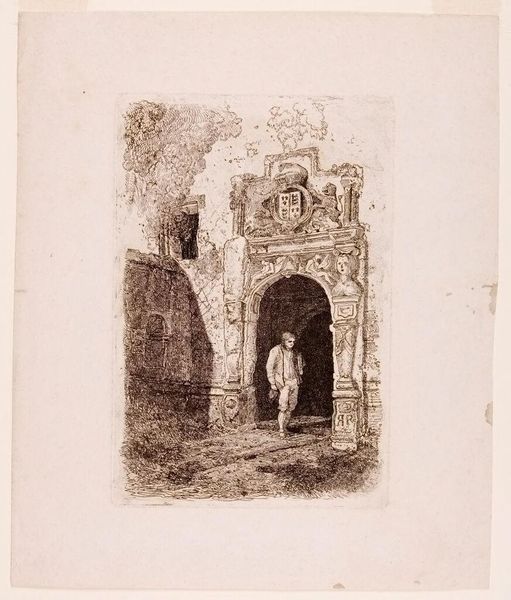
drawing, print, etching
#
drawing
# print
#
etching
#
pencil sketch
#
etching
#
geometric
#
line
#
cityscape
#
realism
Dimensions: plate: 14.6 x 9.8 cm (5 3/4 x 3 7/8 in.)
Copyright: National Gallery of Art: CC0 1.0
Editor: So, this etching is "Moorish Archway, Toledo" by Louis Conrad Rosenberg, created in 1923. It has a very dreamlike quality to me, almost like looking at a memory. What strikes you most about this piece? Curator: Immediately, I'm drawn to the representation of Toledo's architectural history. Consider that 1923 was a time when European artists were deeply engaged with the 'Orient,' but their visions were also complicated by colonialism and evolving perceptions of cultural heritage. How does Rosenberg position Toledo, a city layered with Christian, Jewish, and Muslim history, for his viewers? Editor: That's a perspective I hadn't considered. I was just seeing the aesthetic beauty of the archway. So, do you think he's making a statement about cultural appropriation or perhaps idealizing a romanticized past? Curator: It's less about direct statements and more about engaging in a visual dialogue of the time. Etchings like this were often circulated as affordable art, shaping public perception. Rosenberg uses realism to capture the site but filters it through an artistic lens. Notice how the light emphasizes the archway as a frame. What is being framed, and for whom? The bustling marketplace? Or perhaps an imagined history accessible to the European gaze? Editor: It's interesting how the artwork is not just about the arch itself, but about how it’s presented. That the way he composed it affects our understanding of it. It’s almost like the arch is staged, ready for tourists. Curator: Exactly. Consider how Rosenberg’s training in architecture may influence how he presents this historical landmark as both an admired artifact and a tourist site. Editor: It's fascinating to think about how art reflects not just the subject but the social and historical context in which it was made and consumed. Curator: Precisely, and remembering that the ‘consumption’ and reception of images is an active political process.
Comments
No comments
Be the first to comment and join the conversation on the ultimate creative platform.
